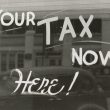D Block reallocation makes long-term sense
Throughout the ongoing debate regarding the future use of the 700 MHz D Block, most of the discussion has tried to weigh the needs of first responders against those of the burgeoning commercial wireless data market, based on their needs for the next five to 10 years.
Certainly this timeframe is critical to both wireless sectors. In the commercial market, the availability of smartphones and other wireless devices has resulted in an explosion of demand for mobile data applications, forcing many carriers to rethink their network strategies if they want to be competitive. In the public-safety market, the wireless data demand has not yet matured, but many industry observers believe that first responders will be power users of such applications should a public-safety-grade broadband pipe become available for mobile and portable use.
Given these realities, it’s understandable that many federal lawmakers and regulators would like to auction the D Block to commercial operators, which already have demonstrated a need for the airwaves. In addition, many federal officials believe auctioning the D Block spectrum is the best way to ensure that behemoth carriers Verizon and AT&T have legitimate nationwide competition in the 700 MHz band.
In addition, FCC officials have spent much of this year noting that having a commercial D Block licensee could provide greater economies of scale for equipment such as handsets in the band class, as well as offer a deployment partner that could help reduce the initial cost of a nationwide broadband network for first responders by at least 50%. Meanwhile, if public safety demonstrates it needs additional spectrum in the future, the FCC has vowed to include first responders in future allocations of the 500 MHz of airwaves it hopes to clear in the next decade.
If decision-makers consider only the next decade, the FCC’s position is difficult to refute. After all, public safety has yet to demonstrate its need for broadband applications — although many note that developing broadband apps makes little sense in an environment where dial-up data rates, or worse, are still the rule — and funding the initial nationwide network promises to be a significant challenge.
However, such a perspective overlooks several long-term realities that would result from reallocating the D Block to public safety, including the following:
- The costs associated with building a public-safety network using LTE technology would be virtually the same, whether it is built on the 10 MHz of spectrum licensed to the Public Safety Spectrum Trust (PSST) or built on 20 MHz with the addition of the D Block, because the number of cell sites that would be needed would be similar.
- D Block reallocation, combined with a few rule changes, would provide the spectral capacity to enable the 700 MHz broadband networks to serve more than just public-safety entities, which could make funding the systems easier. (See story).
- Auctioning the D Block almost certainly would mean introducing another guard band into the 700 MHz swath. While often necessary, guard bands do not represent good spectrum management, as those airwaves typically are not utilized at all. Meanwhile, the D Block winner would have only 6 MHz of usable spectrum for an LTE network.
- If the D Block is auctioned to a commercial user and public safety demonstrates it needs additional broadband spectrum — a scenario that most believe will happen, although the timing is debatable — then public safety would need a portion of future spectrum bands that are cleared for auction. This likely could result in more unwanted guard bands.
- Locating public safety in different spectrum bands for broadband applications could greatly increase network costs in the future. While adding the D Block spectrum to the network would be a negligible expense to at least double capacity, adding 10 MHz in almost any other band in the future could double the total cost of ownership during that period, particularly when trying to ensure that the network on the new band provides seamless interoperability with the 700 MHz network.
- By reallocating the D Block now, public safety would have minimal — if any — need for slices of the spectrum that is expected to be cleared during the next decade, so the FCC would be able to focus on using those airwaves to meet its commercial-market goals.
While each of these is a compelling point, perhaps the best argument for Congress to reallocate the D Block to public safety involves a long-term view of first-response communications. Most industry experts believe mission-critical voice over broadband eventually will supplant land-mobile-radio systems, although there is considerable disagreement whether that transformation will happen in the next decade, or 50 years from now.
But when that evolution occurs, a reallocation of the D Block today would mean that public safety would have 20 MHz of 700 MHz broadband spectrum now and the possibility of adding at least 12 MHz more when 700 MHz narrowband channels are transitioned to broadband use. And don’t forget that the post-rebanding 800 MHz narrowband channels also are nearby.
Exactly how much spectrum first responders will need long term is impossible to project accurately. However, reallocating the D Block for public-safety use today would mean first responders potentially have a very attractive spectral platform of more than 35 MHz in the prime 700-800 MHz band on which to build its long-term broadband future. It’s difficult to imagine a better use for those airwaves.
What do you think? Tell us in the comment box below.

















